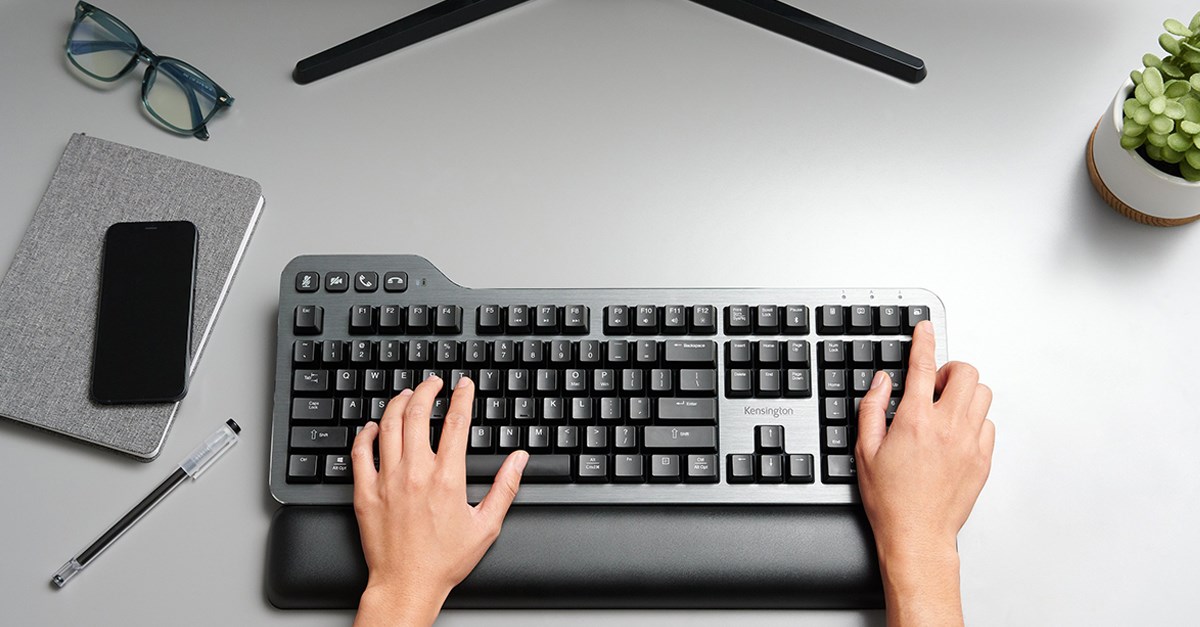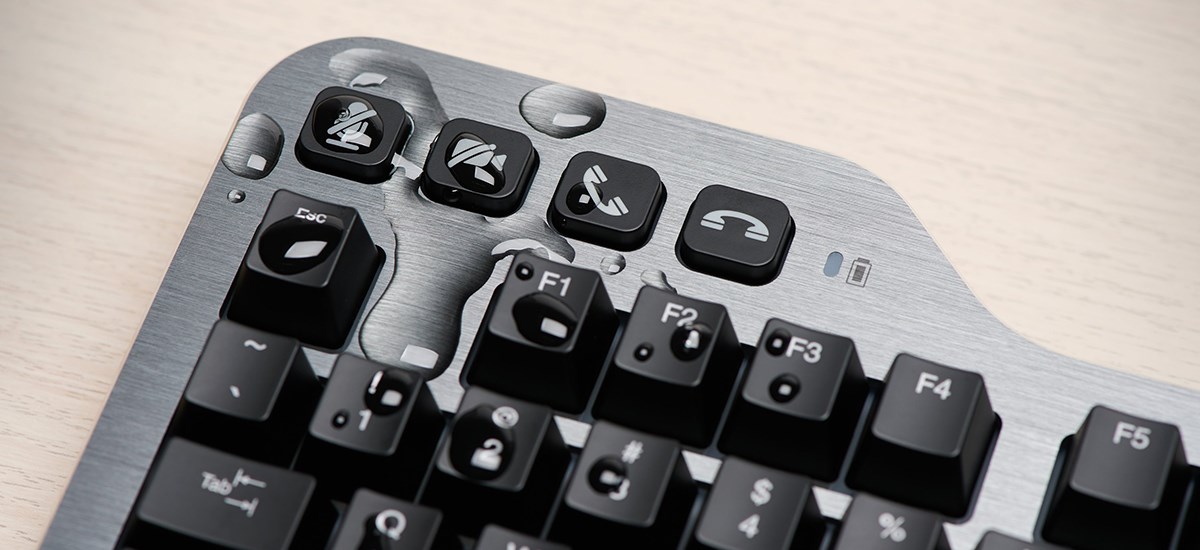
The longstanding debate between mechanical and standard keyboards has been reignited, gaining traction among tech enthusiasts, gamers, and professionals alike.
What is the driving force behind this renewed interest?
Advancements in technology are sparking refreshed interest in mechanical keyboards. By delving into the nitty-gritty technical aspects of these keyboards, we gain a better understanding of why this debate is particularly appealing for IT professionals, administrators, office managers, and home office professionals.
Meeting the Needs of Modern Professionals
Today’s professionals are faced with the challenges of working in noisy environments where distractions like conversations, keyboard sounds, and printer noises can make it difficult to concentrate.
In addition, with the expansion of work-from-home opportunities and multiple office locations, professionals are engaging in more video conference calls and require solutions that help them maintain a high level of professionalism—like quick access to muting microphones, turning off cameras, and ending meetings efficiently.
Furthermore, shared workspaces and busy, task-focused meeting rooms have contributed to an increase in accidental spills—resulting in more keyboard replacements.
It’s also important to acknowledge the role ergonomics is playing in modern workspaces. IT and HR teams are challenged more than ever before to ensure healthier work environments through ergo-friendly workstation setups.
All these challenges highlight and emphasize the need for keyboard solutions that address noise reduction, improve accessibility of video conferencing controls, incorporate spill-resistant and ergonomic designs.

New Standards for Durability
Mechanical keyboards provide more durability and longevity compared to standard membrane keyboards. This is due to the way in which mechanical keyboards are constructed. Unlike membrane keyboards, which feature a thin layer of rubber or silicone between the key and the circuit board, mechanical keyboards use individual mechanical switches for each key. These switches are composed of a metal spring and a stem that registers a keystroke, resulting in a more tactile and responsive typing experience. This design allows for a much higher lifespan, as mechanical switches are rated for tens of millions of keystrokes, whereas membrane switches are typically only rated for a few million. Additionally, the individual switches in mechanical keyboards are easily replaceable, making repairs straightforward and cost-effective. Overall, the durable construction of mechanical keyboards makes them a popular choice for users who value longevity and reliability.
Enhanced Ergonomics for a Pleasant Typing Experience
The renewed mechanical keyboard movement has ushered in a new era of ergonomic designs and visual appeal. Mechanical keyboards are now available in various form factors, layouts, and designs, such as split keyboards, ortho-linear layouts, and compact 60% or 40% versions. This diversity offers ergonomic benefits and tailored user experiences that are not commonly found in standard membrane keyboards. Mechanical keyboards were already known for their enhanced ergonomics, which can offer several advantages over standard membrane keyboards. Firstly, mechanical keyboards typically feature a higher actuation force, the amount of pressure required to register a keystroke, which can help to reduce the risk of accidental key presses. Additionally, the tactile feedback offered by mechanical switches can help to reduce strain on the fingers and wrists, as users can type more efficiently and with less effort. This can be particularly beneficial for users who spend long periods of time typing, as it can help to reduce the risk of repetitive strain injuries. Furthermore, the key travel distance in mechanical keyboards is typically longer than in membrane keyboards, which can provide a more comfortable typing experience. Overall, the ergonomic design of mechanical keyboards can help to improve typing comfort, reduce the risk of injury, and increase typing efficiency, making them a popular choice for users who prioritize comfort and productivity.
Performance-Boosting Key Rollover
Mechanical keyboards are widely considered to be superior to standard membrane keyboards when it comes to key rollover, which refers to the ability of a keyboard to register multiple simultaneous keystrokes. This is due to the individual switches used in mechanical keyboards, which allow for independent key actuation and eliminate the need for a membrane layer to register keystrokes. As a result, mechanical keyboards can support full n-key rollover, which means that each key press is registered independently and accurately, even when typing rapidly or pressing multiple keys at the same time. In contrast, membrane keyboards typically have limited key rollover capabilities, with some models only supporting two or three simultaneous keystrokes. This can lead to missed keystrokes, ghosting, and other issues that can impact typing accuracy and efficiency. Overall, the superior key rollover capabilities of mechanical keyboards make them a popular choice for users who require high typing accuracy and speed, such as gamers and programmers.
Workflow Enhancing Customization
Mechanical keyboards are widely regarded as superior to standard membrane keyboards when it comes to customization. This is due to the modular design of mechanical keyboards, which allows for individual keycaps and switches to be easily replaced, and for the keyboard layout to be customized to suit the user's preferences. In addition, many mechanical keyboards come with software that enables users to program macros, reassign keys, and customize lighting effects. The tactile feedback and distinct sound of mechanical switches can also be customized to suit the user's preferences, with a range of switch types available that offer different levels of actuation force and tactile feedback. Overall, the customizable design of mechanical keyboards makes them a popular choice for users who value flexibility and personalization in their keyboard setup.
Seamless Integration and Connectivity
In terms of connectivity and integration, mechanical keyboards offer several advantages over standard membrane keyboards. Firstly, mechanical keyboards typically feature a standard USB connection, which makes them compatible with a wide range of devices and operating systems. This can be particularly beneficial for users who need to switch between multiple devices or work with different platforms. Additionally, many mechanical keyboards feature customizable key programming and macros, which can be useful for optimizing workflow and improving productivity. Mechanical keyboards also often offer a greater degree of customization when it comes to lighting and visual effects, which can enhance the aesthetics of a setup and create a more immersive experience. Overall, the versatile connectivity and integration options offered by mechanical keyboards make them a popular choice for users who require flexibility and customization in their keyboard setup.
A Quieter Typing Companion
Recent advancements in mechanical keyboard technology have led to the development of quieter mechanical switches, which offer a more pleasant and comfortable typing experience than previous mechanical keyboard models. These new switches, such as Kailh Midnight Pro and Cherry MX, utilize dampening materials and redesigned stem shapes to reduce the sound produced during typing, resulting in a more subtle and less distracting noise profile. This improvement makes the latest mechanical keyboards an ideal choice for professionals working in shared office spaces or noise-sensitive environments.
Power to Keep You Going
Mechanical keyboards are typically wired and do not require batteries, making battery life a non-issue. However, wireless mechanical keyboards often include high-capacity batteries that can last for weeks or even months on a single charge. This is due in part to the energy-efficient design of mechanical switches, which require less power to actuate than the rubber dome switches found in standard membrane keyboards. Additionally, many wireless mechanical keyboards feature power-saving features such as automatic sleep mode and low power consumption Bluetooth® connectivity, further extending battery life. In contrast, standard membrane keyboards that utilize wireless technology typically require batteries or frequent charging, which can be inconvenient and add to the overall cost of ownership. Overall, the efficient power consumption and long battery life of mechanical keyboards make them a popular choice for users who prioritize convenience and long-term value.
Leading with the Solution
Today’s professionals demand aesthetic and practical elements from their keyboards. They desire keyboards that look as good as they function. They want durable modern designs and a quieter typing experience to complement their contemporary office spaces and work-from-home setups. Kensington recently launched the MK7500F QuietType™ Silent Mechanical Keyboard as a solution-focused category leader for those evaluating mechanical keyboards:
- Universal compatibility
- Quiet typing with Kailh Midnight Pro Silent Tactile switches
- Suitable for quiet environments
- Sealed IPX4-certified spill-proof design
- Video conferencing controls
- 128-bit AES government-grade encryption security
- Built-in rechargeable battery that provides up to 90+ hours of use
- Fully customizable keys via optional software
- Full-size top aluminium frame
- High-quality laser-etched ABS keycaps
- Durable ergonomic design for all-day comfort
- Gel wrist rest pad
- Adjustable white backlight
- Dual-position feet with 5- and 7-degrees angle
- Washable silicon dust cover
Whether working in an office or remotely, MK7500F users can enjoy a comfortable, efficient, and pleasant typing experience that enhances their productivity and overall work satisfaction.
Conclusion
The resurgence of interest in mechanical keyboards can be attributed to the stark differences in switch technology, performance, customization, and ergonomics compared to standard membrane keyboards. While standard membrane keyboards may still cater to budget-conscious users, mechanical keyboards usually surpass standard membrane keyboards in preference and performance because their mechanical switches offer improved durability, tactile feedback, and responsiveness—resulting in a more accurate and enjoyable typing experience and making them a popular choice among typists, programmers, and gamers.
Learn more about the Kensington MK7500F QuietType™ Pro Silent Mechanical Keyboard with Meeting Controls and how our family of keyboards is supporting next-gen experiences.